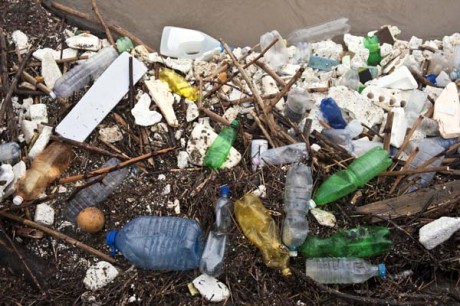Let’s Talk Trash
Sending your paper trash to recycling really helps
By Amy Ney
North Carolinians generate a lot of trash. We throw away food scraps, old clothing, broken appliances, yard waste, product packaging, single-serving containers, cans, plastic bottles and bags, baby diapers, magazines, disposable dishware, fast food wrappers, and the list goes on. But do we think about where all these items go? Or about what happens after our waste is dropped off at the convenience/ collection center or is loaded onto the garbage truck?
Some waste may first travel to a transfer station where it is sorted and the recyclable and compostable items are removed, but much waste goes directly to a landfill — a giant engineered hole in the ground that is designed to hold our waste while protecting the environment from it.
Landfills may solve one aspect of waste disposal, but in so doing, they create numerous others. First, we are quickly filling them up. In 2007 North Carolinians produced 11.86 million tons of refuse. We throw away about nine times more than we recycle. And items that are banned from disposal in North Carolina landfills, such as aluminum cans, plastic bottles and other rigid plastic recyclable containers, still find their way into the trash in record numbers. Secondly, most landfills are designed so that items do not decompose. Sunlight, moisture and oxygen — all necessary for decomposition to occur — are missing from the piles of compacted and covered fill. So, even items that are biodegradable in your compost bin will last indefinitely in a landfill. In one study that excavated 30 tons of waste from 15 landfills located across the U.S., newspapers, magazines and other paper comprised approximately half of the contents, and were still readable over 40 years later. Thirdly, everyone wants the convenience of trash disposal, but no one really wants a landfill in their backyard. Finally, landfills can cost upward of $250,000 per acre to develop, and once they are filled, we must find a new site and begin the process again.
In this series, we'll look at some of the common items that we throw away that are environmentally harmful or fill up landfill space, and what we can do about this waste. Paper alone accounts for approximately 40 percent of landfill usage. Plastic grocery bags, which take up very little space, are making a big impact on our environment in other ways. Plastic bottles, which we routinely buy filled with water from here and abroad, are another contributor to the waste stream.
Paper
Paper found in our landfills comes from a variety of sources — product packaging, newspapers, magazines, phone books, junk mail. Every year, North Carolinians throw away more than $164 million worth of mixed paper. If we just recycled all of our newspaper in the U.S., it would prevent the harvesting of 250 million trees while still providing raw materials to make new paper products. Paper mills actively use recovered recycled paper to produce new paper that requires 60 percent less energy and 59 percent less water to create, and emits much less air and water pollution than making paper from virgin wood pulp. In addition to preserving natural resources and protecting the environment, recycling paper also saves room in our landfills — one ton of paper takes up over 3.3 cubic yards of landfill space. Probably the biggest impact we could have on our landfills would be to recycle paper — including phone books, junk mail, newspaper ads and anything else made from a tree — and then buy recycled paper. To increase your impact, encourage your local businesses to recycle and use reusable, recyclable and compostable materials, and then support the ones that do.
-
Share this story:

